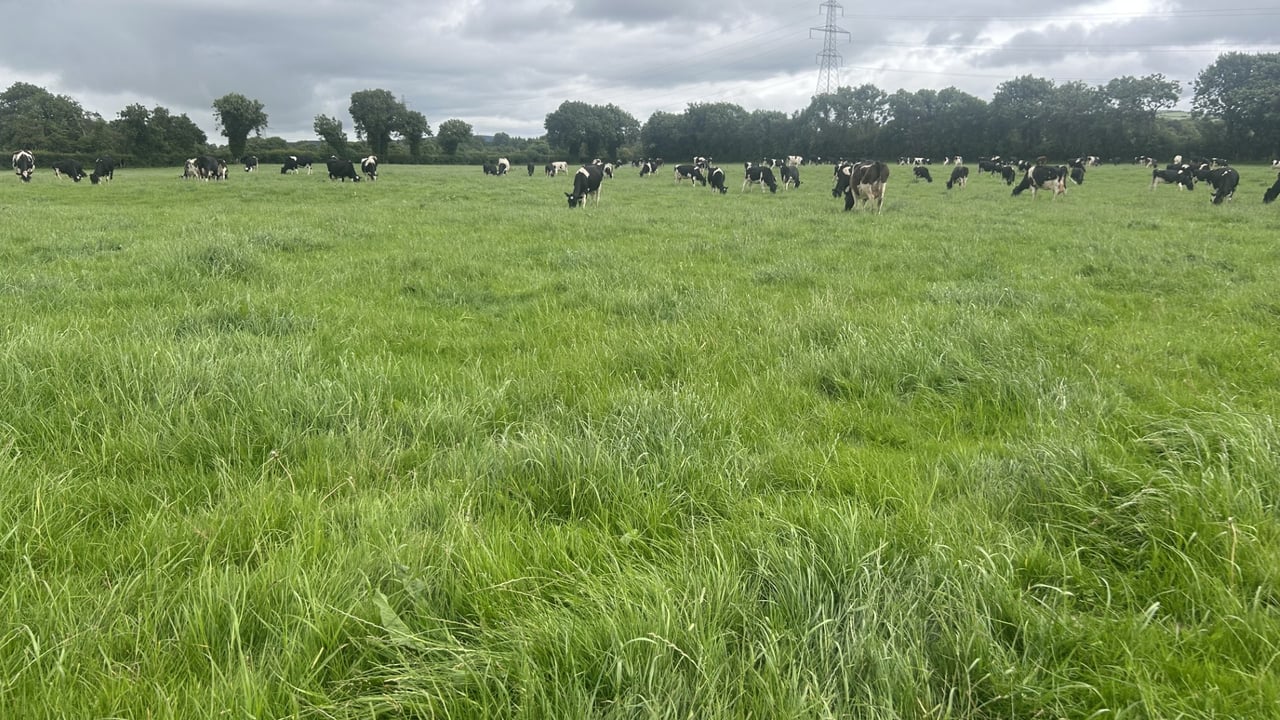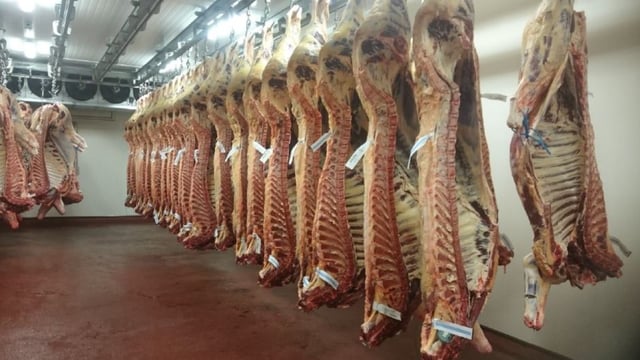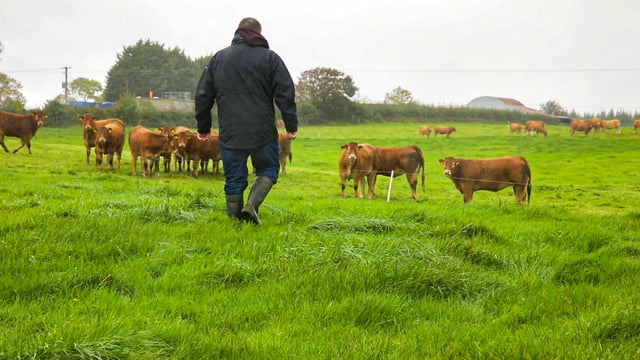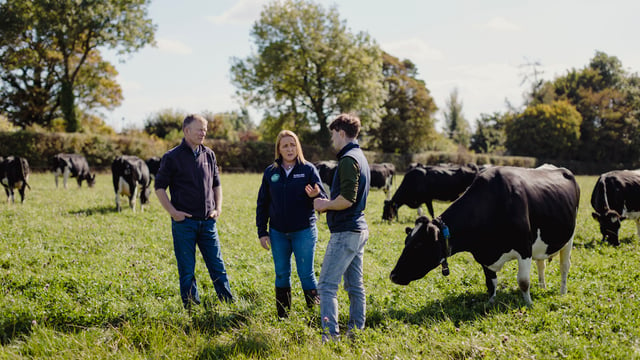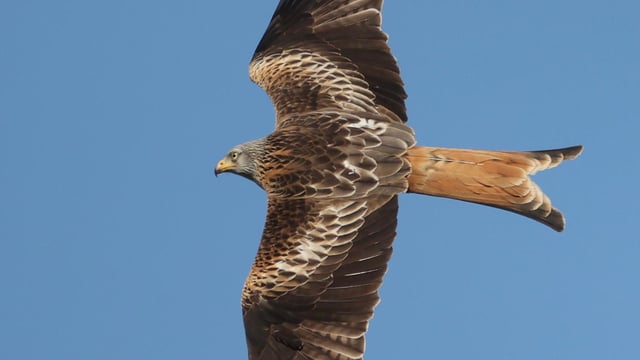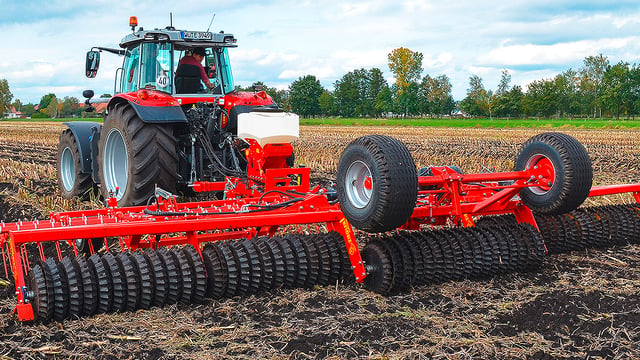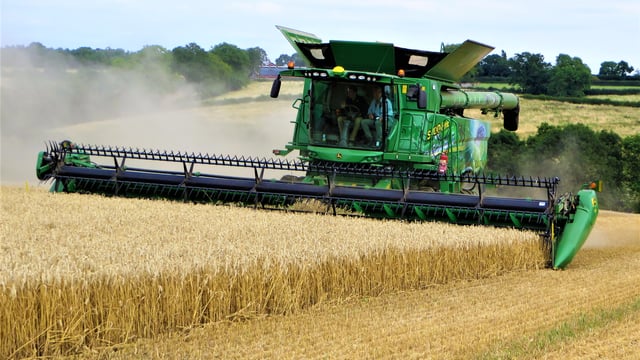Grass growth: Shorten rotation or reduce meal to increase demand
Grass growth continues to improve on farms across the country, with a small percentage along the south coast feeling a slight deficit in grass supply.
For the most part, farms are experiencing a surplus of grass or are in a perfect position to manage quality and demand.
The most important thing in the month of June is to keep quality grass ahead of cows, to try and hold their milk production and improve the protein content of the milk.
At the minute, cows are still going into high covers, which is inevitably going to drop cow performance and have a negative impact on the growth response of paddocks due to cows leaving poor residuals.
Cows' performance and solids production will drop as they cannot eat the same amount of stem as they can of flush, quality grass.
On stemmy grass, they might be limited to an intake of 15kg of grass dry matter (DM) rather than an intake of 18-19kg of grass DM.
The importance of quality grass cannot be understated as 1kg of stemmy grass is the equivalent of 0.9UFL whereas 1kg of flush grass at the three leaf stage in a cover of 1,400kg DM/ha will provide 1.0UFL.
If cows take in only 15kg of DM grass and eat only 2-3kg of meal, this will only support about 21L of milk, whereas if cows take in 18kg of DM grass with 2-3 kg of meal, it will support 28L of milk for your average Irish cow.
Grass growth
Current average grass growth across the country is 71kg DM/ha with a demand of 56kg DM/ha and a diet of 15.5kg of grass DM and 3.5kg of meal, according to PastureBase Ireland.
This lower grass intake can be attributed to the 1,563kg DM/ha average pre-grazing yield, which is only being replaced by meal to keep up production.
At a growth rates of 71kg DM/ha/day and a prediction of slight drop next week to 66kg DM/ha/day, farmers need to try and reduce or maintain their grazing rotation to 20-21 days to keep cows going into 1300-1400 kg DM/ha pre-grazing covers.
Going into better quality covers will increase the herds' grass intake which will allow the farmer to allocate 18-19kg of grass DM and reduce meal to 1-2kg/cow/day.
Remember that when you are feeding meal at higher rates of 4-6kg, the meal will displace about 0.5kg of grass DM for every 2kg increase in meal fed.
If meal in the diet is already decreased and cows are still going into heavy covers and grass is proving difficult to stay ahead of, farmers should look at taking out paddocks for surplus bales in the next few days to increase the demand by shortening the rotation.
With growth rates up and set to remain promising for the next week, it is best not to delay on taking out paddocks as the grass situation can change quickly. So if needs be, get them cut and back into the rotation as quickly as possible.
At this stage of the year, farmers must try and hold average farm cover at about 600kg of DM/ha or between 160-200kg DM/LU to maintain quality and maximise intakes.
For farms experiencing a deficit, supplementation may be required to fill the deficit or ideally graze paddocks which were intended for silage or remove non milking stock from the platform.
Continue getting out your fertiliser amidst the good growth, aiming to apply 18-20 units of N/ac (22-25kg N/ha) of a protected urea with sulphur (S) product.
Farmers must not underestimate the power of their soiled water and should apply about 2,000gals/ac to their paddocks that have a higher clover content and are not as reliant on chemical N as other paddocks.

